|
Discover the Charm of Kingsland, Georgia
Story and
photos
by Kathleen Walsl
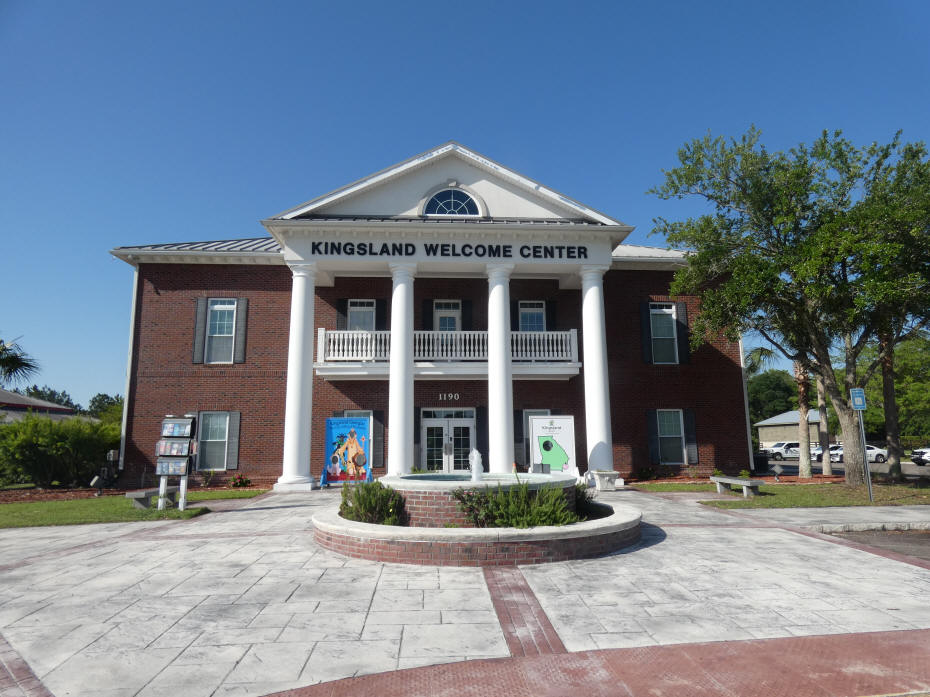
Kingsland is a perfect base to explore Southeast Georgia. It's
just across the Florida line, so it's an easy drive for me. It's
just off I 95, so it's easy to get to from anywhere in the east.
Lodging
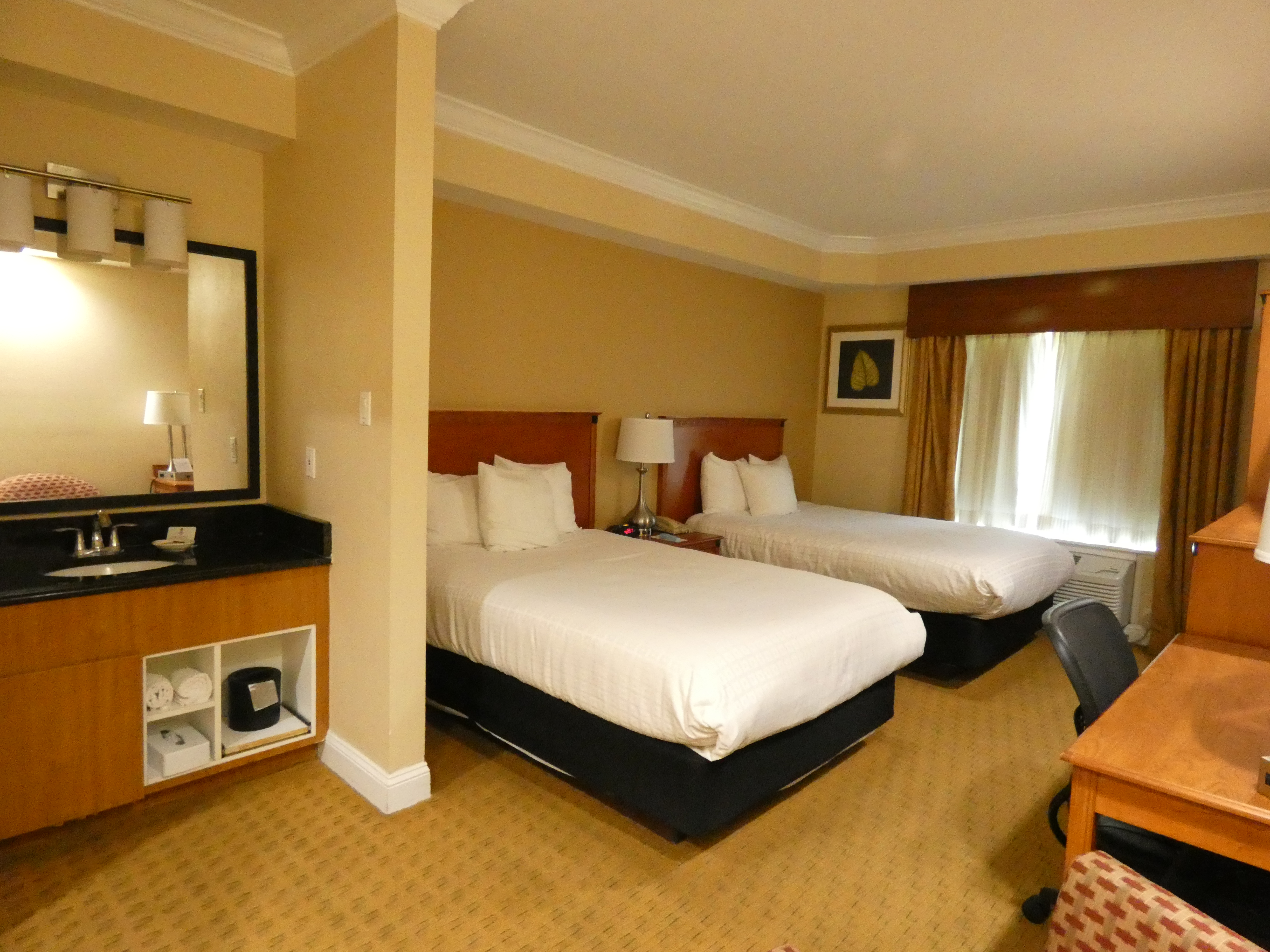
I stayed at the
Best Western Plus, and it was very comfortable. Plus, they
offer a delicious free breakfast.
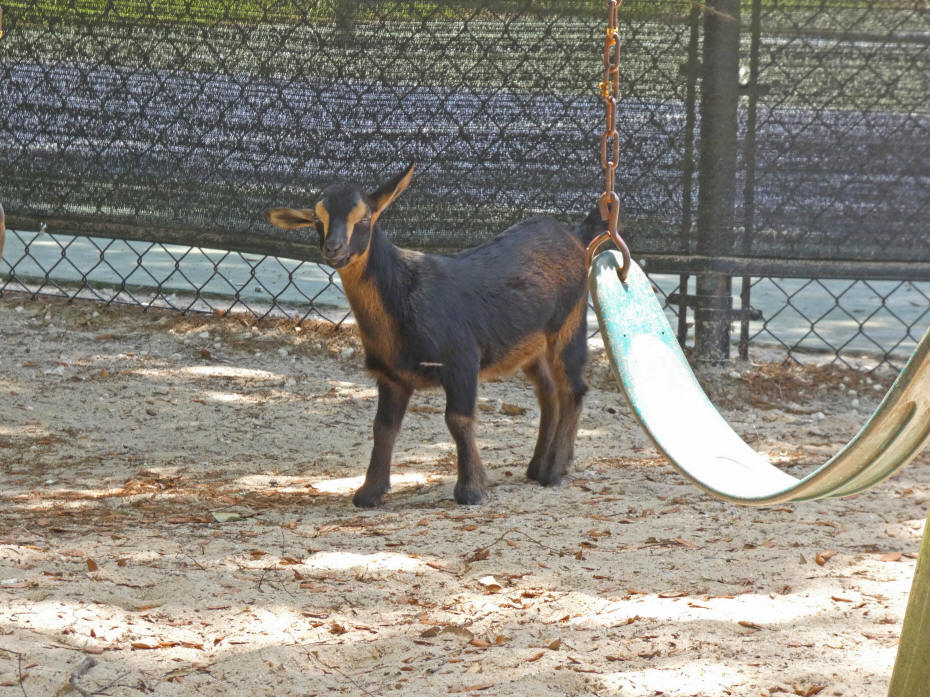
If you're RVing or want a cabin,
Crooked River
State Park, on the St. Mary's River, has tent camping, RVing
and cabins. Walkabout RV Park, in Woodbine, offers camping with
an Aussie twist. Even if not staying there, you can visit their
farm animals in their mini-zoo.
Explore Kingsland Area

Start your visit at historic Lee Street and visit
Thiokol Memorial Museum
to learn about the chemical plant explosion that rocked Georgia
during the Vietnam War. The plant manufactured tripflares for
the military. This was one of the worst industrial tragedies in
US history. The explosion killed 29 and injuring another 50
people, primarily women of color, who did not know how dangerous
the material they were using was.

During strawberry season or when any of the other crops Farmer
Bob grows, you can do a U-Pick at
Merck Farm. I picked
some luscious strawberries.
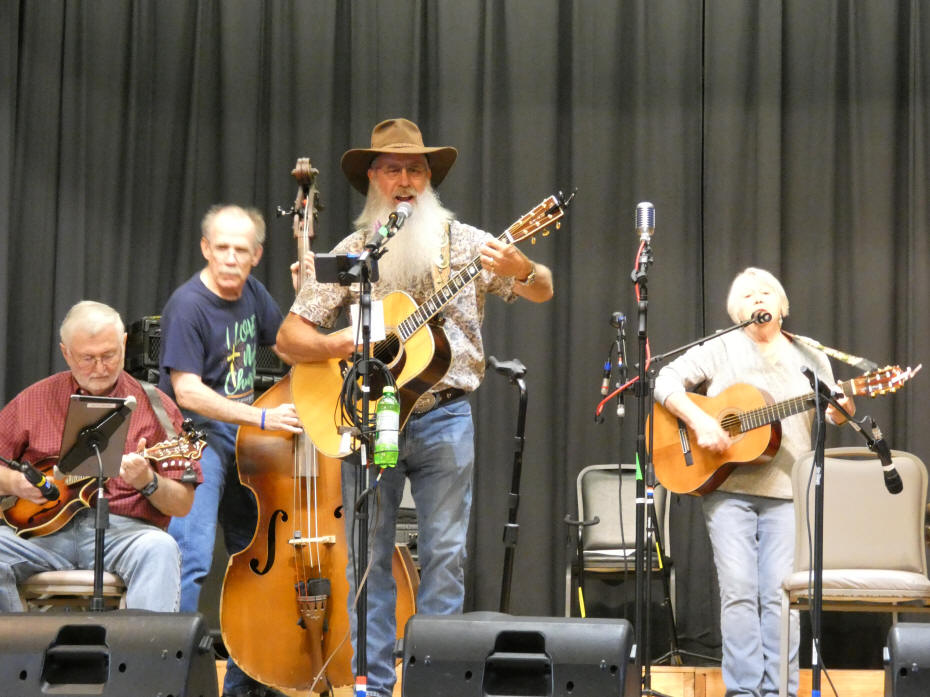
For some nighttime fun, visit the
Woodbine
Opry where Friday and Saturday night, talented local
musicians play some old-time music in the historic Old Woodbine
School. The night I visited, I heard many of my favorite
old-time songs: "I Still Miss Someone," "Seminole Wind,"
"Lucille," and the old Ralph Stanley classic "One Drop of
Water."
Do stop and see the
Veteran’s Memorial Park. It’s a reminder to never forget the
brave men and women who serve in our military.

There is no shortage of great dining places in Camden County.
Steffens
Restaurant, which opened in 1948 as a "Fight House" with a
small concession stand specializing in donuts, is a staple in
Kingsland. They serve home cooked style meals.

Captain Stan's Smokehouse is set in a gorgeous outdoor
setting with an ancient oak tree. It serves fantastic BBQ and
has a live band on weekends.
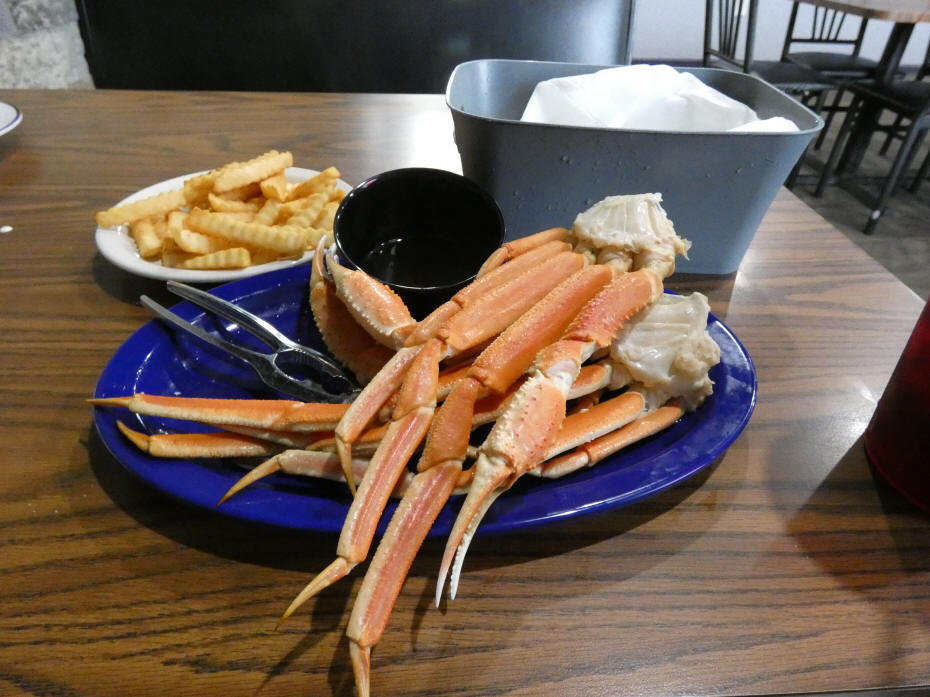
If you have a hankering for fresh seafood, try
Ship 2 Shore.
Okefenokee Swamp
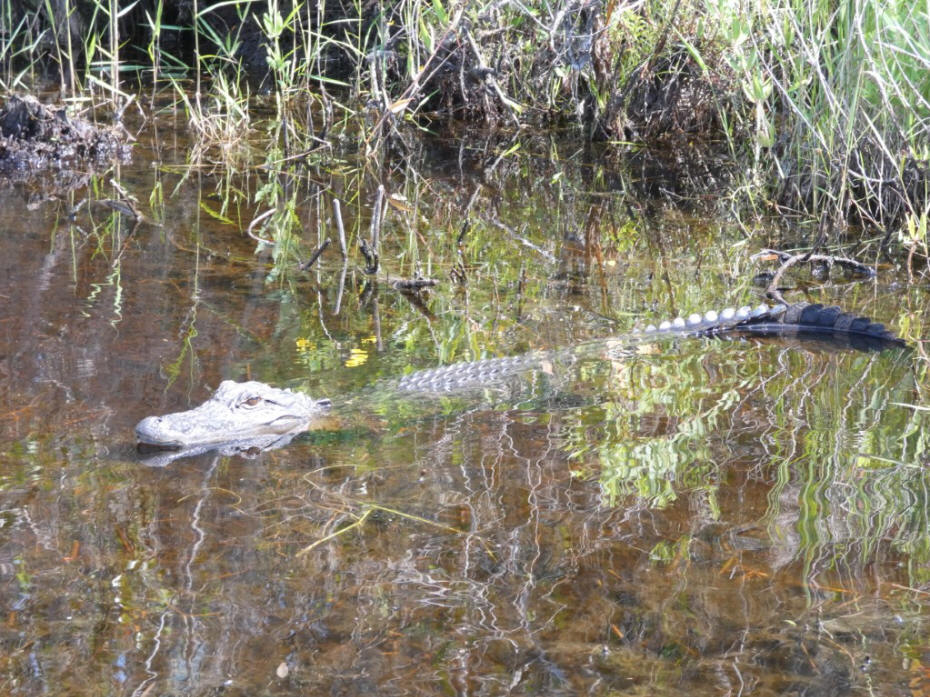
Branch out a few miles to the west and see the wildlife and
plants that make Okefenokee Swamp unique. Take a boat tour at
Okefenokee
Adventures. You won't believe the variety of wildlife on the
tour. There were more alligators than I could count: lots of
water birds, some turtles, and amazing plants that you seldom
see anywhere else.
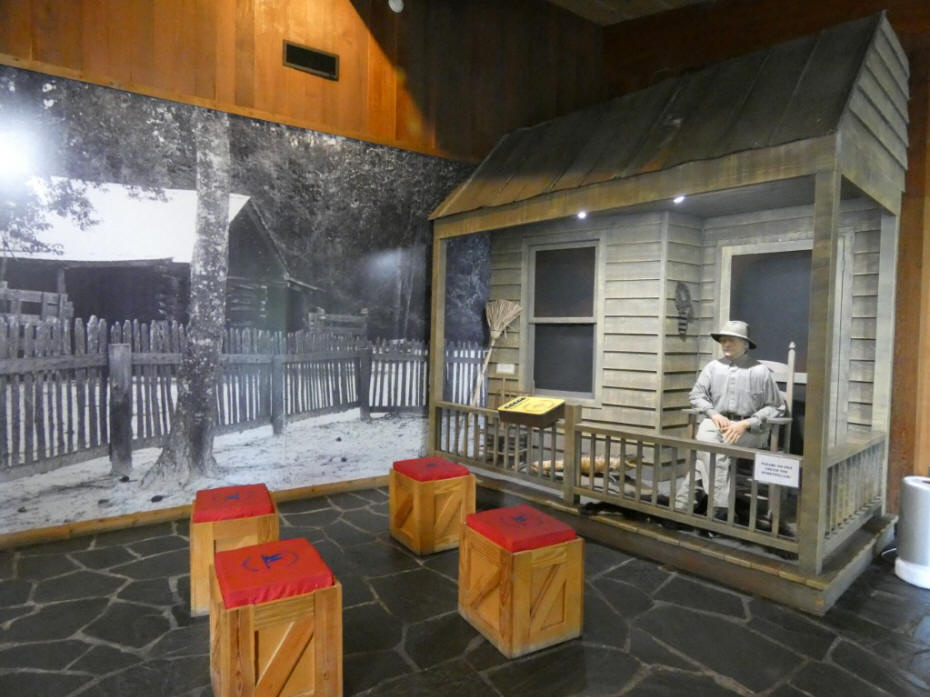
If you're hungry after the boat tour, there's a cafe and a small
museum to learn more about the swamp.
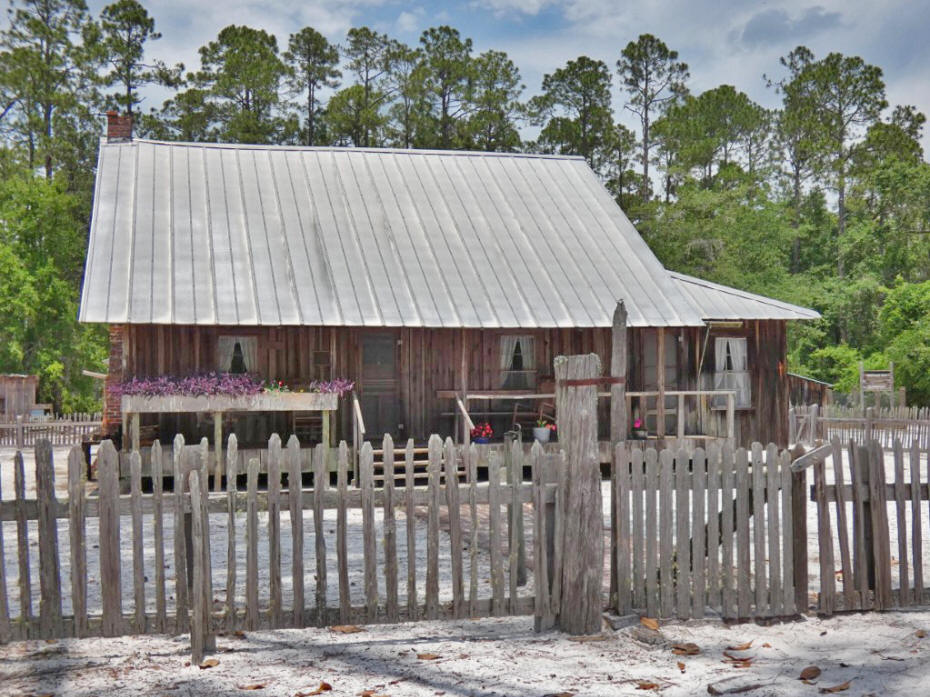
Then drive out Swamp Island Drive to the historic
Chesser Island Homestead in the midst of Okefenokee National
Wildlife Refuge.
St. Mary's

Kingsland is just a few minutes away from St. Mary's. Browse the
historic homes here. Visit the Submarine Museum, the Cumberland
Island Museum & War and 1812 Exhibit, and dine at Riverside
Cafe. Southern River Walk Bar & Grill, or Locals Dockside. The
Café at Cottle & Gunn combines one-of-a-kind vintage items with
food.
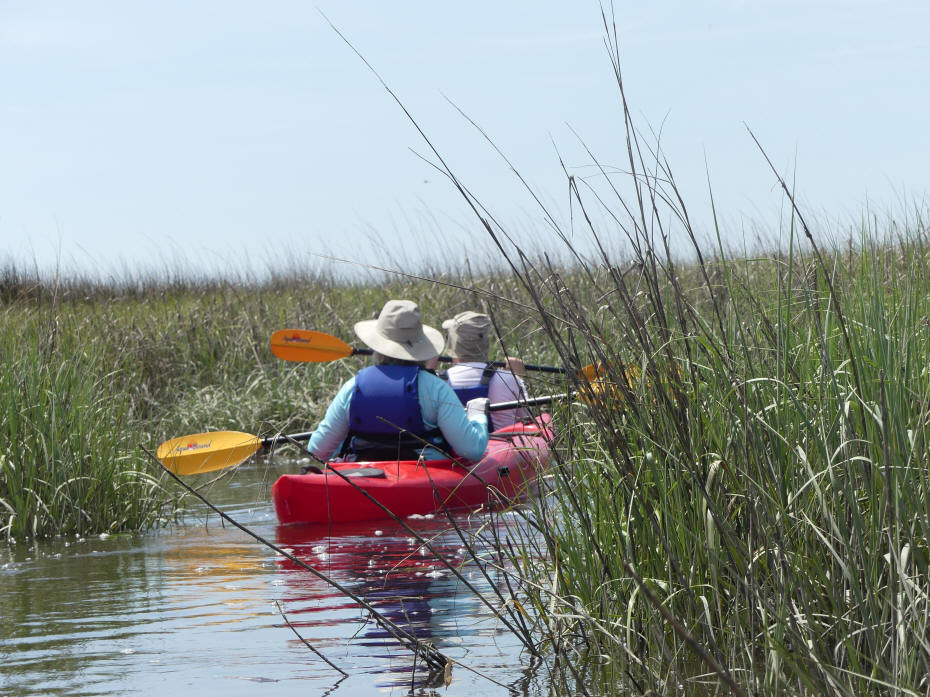
For some watery fun, take a guided kayak paddle around St. Marys
Harbor with
Adventures up the Creek. Jennifer Koerner, our guide, does a
wonderful job.
Cumberland Island
.jpg)
If you have an extra day, take the ferry over to
Cumberland Island,
one of the small barrier islands on the Atlantic coast that
helps protect the mainland when hurricanes strike. Here you can
relive the era of the Carnegies, watch feral horses play, and
visit historic ruins in a primitive preserved spot where
civilization hasn't encroached too much. There are no bridges to
the island. The National Park Service provides ferry service for
no more than 300 visitors a day. You depart from the dock in St.
Marys Georgia.
Inland, the huge oaks sprawl
near the ground providing a haven for birds, squirrels and weary
hikers. You will note the island grass is kept trimmed by the
feral horses and wild deer you will find there. The island's
horses are a relic of many cultures, ranging from the abandoned
horses of the Spanish explorers to the fine riding horses and
dray animals once owned by the Carnegies. In 1882, Thomas
Carnegie acquired most of the island and built a replica of a
Scottish castle on the site of the original Dungeness ruins
built by Oglethorp. When Thomas died in 1886, his wife, Lucy,
continued using
Dungeness as a seasonal home for many years. Gradually,
the magnificent showplace fell into disrepair. A fire ravaged it
in 1959, leaving only a skeleton.
There are only a few dirt roads
and trails, so expect to hike, rent a bike or bring your own for
transportation around the island.
Ice House Museum
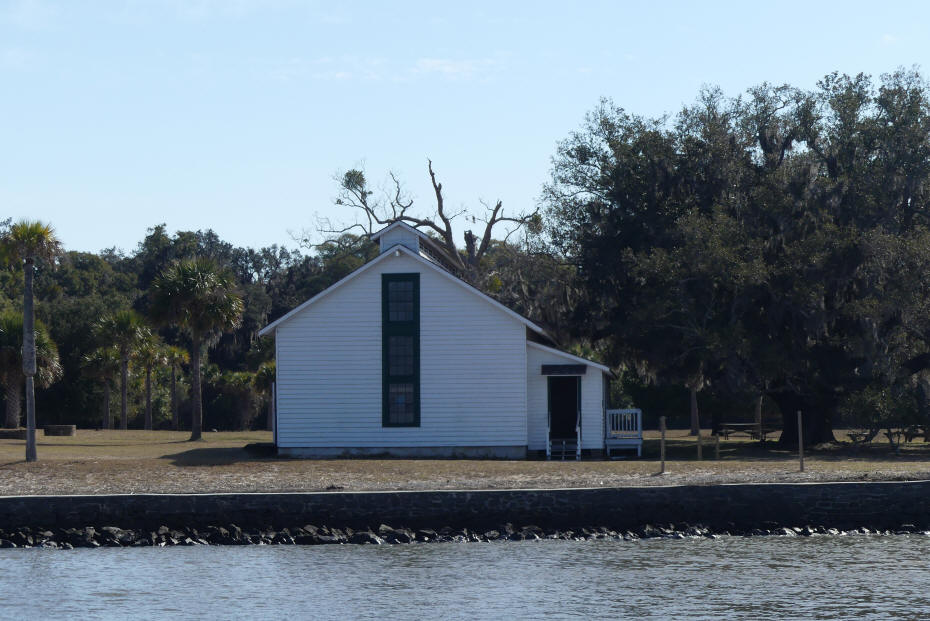
Ice House Museum
near the Dungeness dock is a good place to start your
exploration. It tells the history of the island from the initial
English explorers in 1733 with the arrival of James Oglethorpe,
who build forts on San Pedro, which he renamed Cumberland Island
after William Augustus, the duke of Cumberland.
Shortly after the Revolutionary War, General Nathaniel Greene
planned his home on the site of an old hunting camp belonging to
General Oglethorpe. Greene died before it could be built. His
wife, Catherine, continued with his plans and constructed an
elegant four-story mansion she named "Dungeness."
Catherine and her second husband, Phineas Miller, and her
children operated a vast Sea Island cotton plantation.
Tabby House
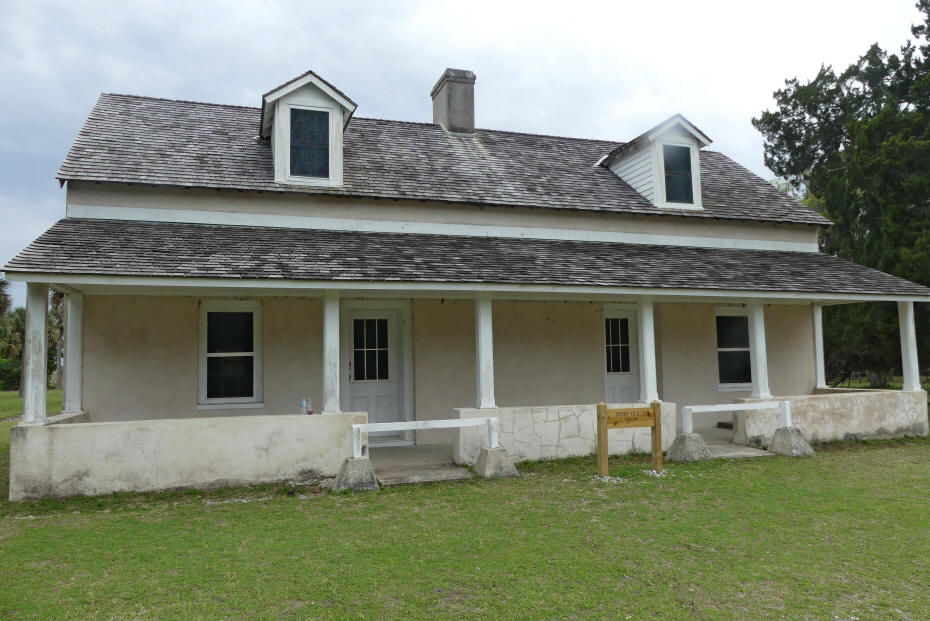
That mansion is long gone, leaving only what is now the oldest
standing building on the island. It is called the
Tabby House and
probably served as the Millers' temporary residence while
constructing the mansion. The Tabby House later served as an
office for the Carnegie estate. It lies a few dozen yards from
the ruins of the Carnegie mansion.
The Carnegies later deeded most
of their land to the National Park Service, so today 90% of the
island is a national park. Cumberland Island offers a nature
lovers' paradise with miles of hiking trails, dirt roads and
sandy beaches. The Carnegies specified that the land was never
to be developed and remain preserved as a national treasure.
There is a
Footsteps Tour,
depending on staff availability, that walks you through the
Dungeness Historic District. They begin at Dungeness Dock at
10:00am and 12:45pm. Walking tour lasts about an hour and covers
about one mile.
Note that there are no
concessions or restaurants on Cumberland Island. You must bring
food and water for the day. There are places to refill your
water bottle on the southern end of the island.
Remember to pack sunscreen and
bug repellent. The rule is if you bring it in, be prepared to
pack it out. Passengers on the van tours may only bring a small
backpack or bag. No hard coolers or camera tripods are
permitted. Bicycles can be transported on ferry for a small fee
but only a limited number due to limited space. You can rent a
bike on the island (first come, first served.)
Cell phone reception is sketchy
on the island.
North End of Cumberland
The ferry stops at Sea Camp Dock for those staying overnight on
Cumberland Island. Options include Sea Campground, Stafford
Beach, Hickory Hill, Yankee Paradise, and Brickhill Bluff
campgrounds. All are primitive, and you must carry out all your
trash as there are no garbage cans.
Land and Legacies Tour
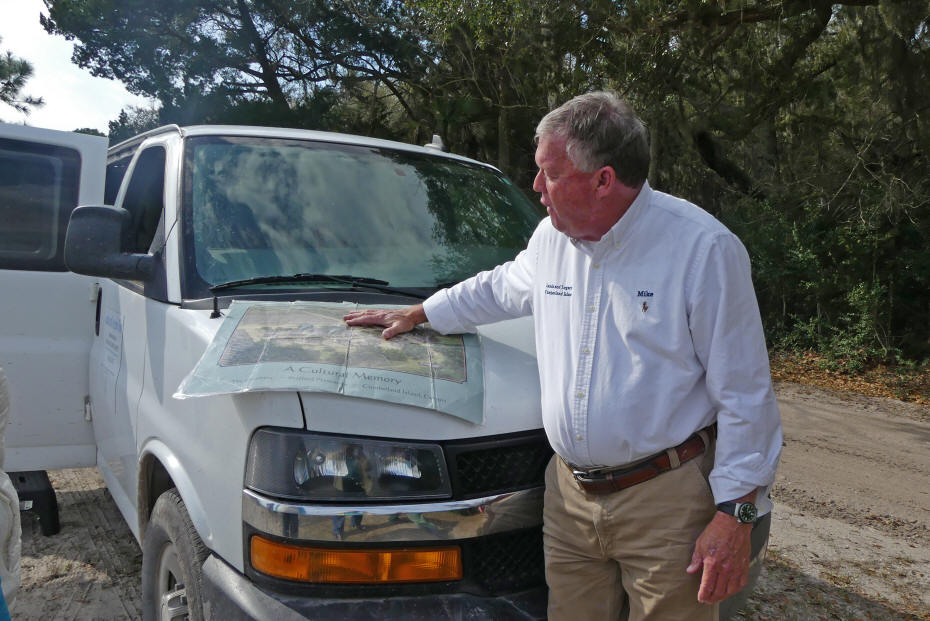
Another reason the ferry goes to Sea Camp Dock is that
Land and Legacy
Tours depart from there. It's a five to six-hour tour in a
ten-seat van over about 30 miles of unpaved road that takes you
to the north end of the island.
Remember, the island is 18 miles long. You can bring a bike or
rent one at the dock, but that is a long way to pedal, so if you
want to see the north end of the island, take this tour. Not
only does the tour take you through many buildings, but your
guide gives a detailed history of each place along the route.
Frequently, you will stop to see the feral horses on this end of
the island and the other wildlife, like turkeys, deer, and
armadillos. According to Mike, our guide, there are three
separate herds on the island, the south end one around Dungeness
Ruins, a herd near Stafford Plantation site, and one near The
Settlement.
Greyfield Inn
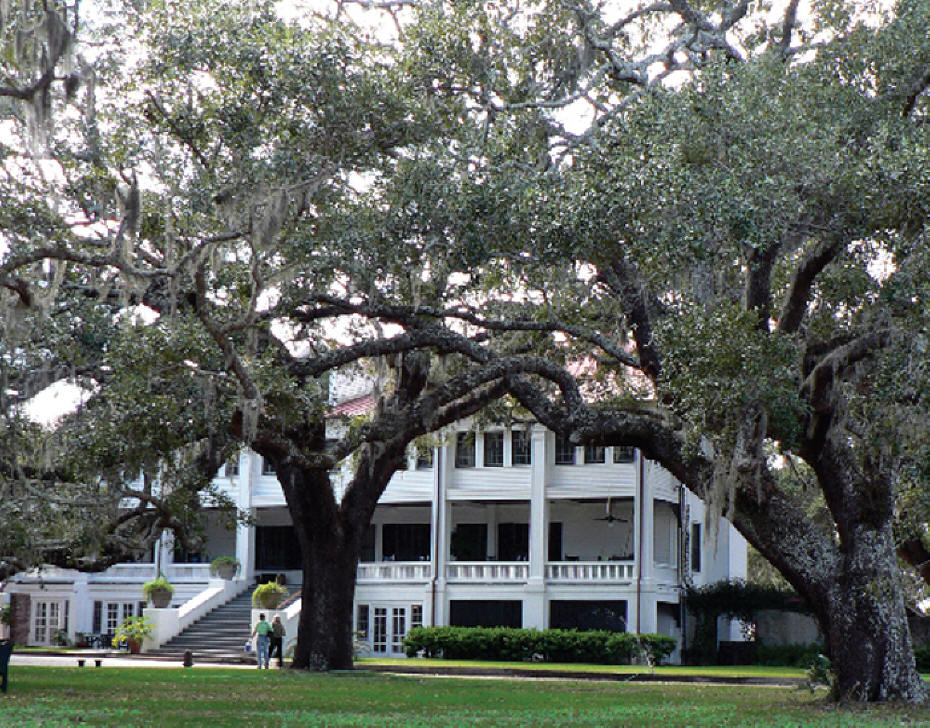
Greyfield Inn, the only lodging on the island, is a pricier
option for spending a night on the island. Greyfield was a
wedding gift from Lucy Carnegie to their daughter Margaret. It
is still owned and operated by Carnegie descendants, Mitty
Ferguson, Margaret's great-grandson, and his wife Mary. The tour
doesn't take you inside, but the guide tells its history as you
pass outside.
Plum Orchard
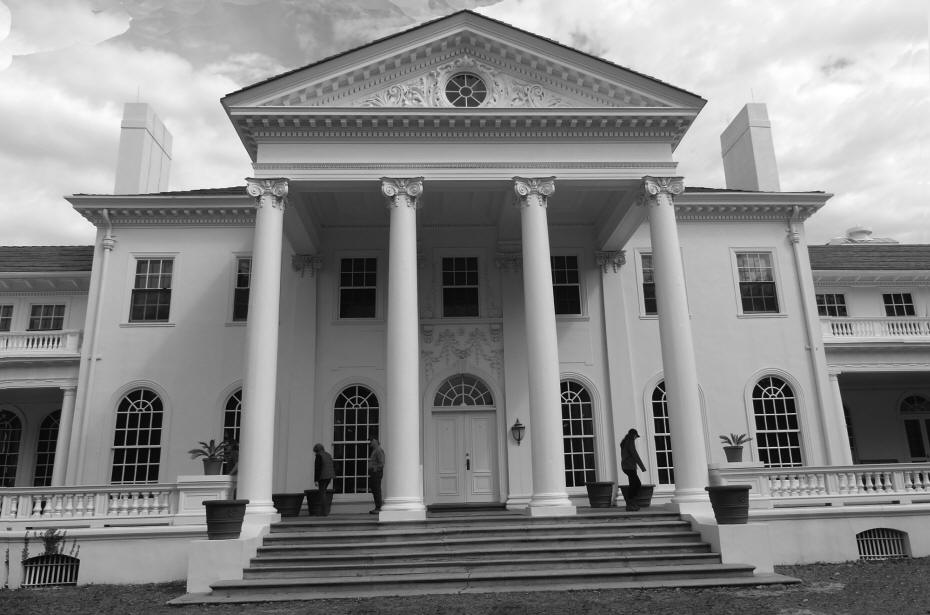
Plum
Orchard was another wedding gift from the Carnegies to the
oldest son, George, and his bride, Margaret. You do tour it on
the Land and Legacy Tour. It's a magnificent 30-room Classical
Revival style home.

After George died in 1921, his widow sold the furniture and
abandoned the house. The youngest Carnegie, Nancy, moved into
Plum Orchard. There are many artifacts left by Nancy Carnegie
and her second husband, Doctor Marius Johnston. The home had
running water and electricity before it was available in most
other places. There's a swimming pool and squash court inside
the home.
Stafford Plantation
Stafford Plantation predates Carnegie history. Robert Stafford,
the largest plantation owner on Cumberland Island, disapproved
of slavery and treated his slaves differently. They could earn
money after their duties and were encouraged to save it.
Stafford insisted they learn reading, writing, and arithmetic,
and provided a church and hospital. He had two mixed-race
families with large trust funds, and one daughter, Nancy, became
one of the first African American doctors.

His
plantation was purchased from his heirs by Lucy Carnegie and
gifted to her eldest son, William, upon his marriage to Margaret
Ely. January 5, 1900, a fire destroyed the original Stafford
mansion. A year later, William built another house on the site.
He turned portions of the original cotton field into a nine-hole
golf course. You will visit the cemetery where Stafford, his
mother, and sister are buried. The golf course is now overgrown
and all that remains of the slave quarters cannot be seen, as
they are on private land currently owned by the Rockefellers.
The Settlement

After the Civil War ended, Stafford's freed slaves migrated
farther north on the island and lived in what they called The
Settlement. Union Soldiers returned home and told friends about
the pleasant southern winters. That created a market for hotels
on the island. Hotel developers saw the already-in-place African
Americans as an excellent source of hired help. They sold the
residents lots for $11, where they could build houses. The Great
Depression ended the hotels. African American residents left for
jobs on the mainland.
Today just a few buildings remain at The Settlement. There is
the African American Church where JFK, Jr. was married. Kennedy
chose this location for privacy. The church and one other
building are open for visits.
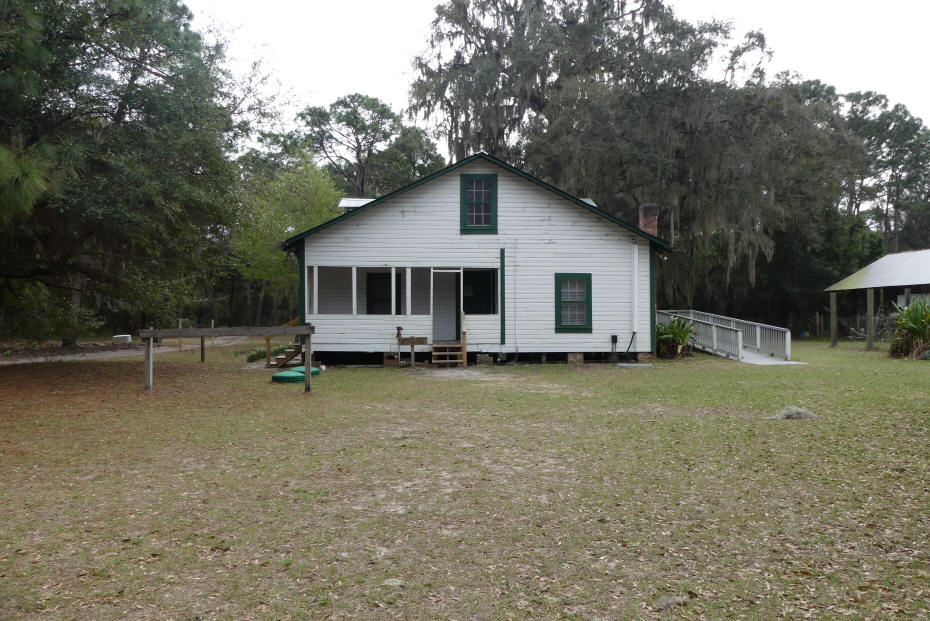
The
other open building was the home of Beulah Alberty, daughter of
one of the original homeowners. Beulah was a college-educated
schoolteacher. She returned to The Settlement and helped the
community with legal matters, started a school for the children,
and became known as the Mayor of The Settlement. Her house is
unfurnished but has photos and restrooms but no drinkable water.

Next
to the church, there is an old red house. It is dilapidated and
not safe to enter. It possibly belonged to Beulah's uncle,
Rogers Alberty.
The
other standing house here is labeled with a large banner stating
"Wildcumberland.org" and belongs to Carol Ruckdeschel, a
self-taught biologist who opposed the island tours, feral
horses, and much of the visitor use of the island. Do not
trespass on her property. Carol does not welcome visitors and in
the past, shot and killed a supposedly violent ex-boyfriend
here.
It's
impossible to overrate the charm and mystic of this island where
there are few cars, just walkers and bikers. Feral horses,
wildlife, and history claim Cumberland as their own.
Public
Disclosure Please Read FTC has a law
requiring web sites to let their readers know if any of the
stories are 'sponsored' or compensated. We also are to
let readers know if any of our links are ads. Most are not.
They are just a way to direct you to more information
about the article where the link is placed. We have several ads
on our pages. They are clearly marked as ads. I think
readers are smart enough to know an ad when they see one but to
obey the letter of the law, I am putting this statement here to
make sure everyone understands. American Roads and Global
Highways may contain affiliate links or ads. Further, as their
bios show, most of the feature writers are professional travel
writers. As such we are frequently invited on press trips, also
called fam trips. On these trips most of our lodging, dining,
admissions fees and often plane fare are covered by the city or
firm hosting the trip. It is an opportunity to visit places we
might not otherwise be able to visit. However, no one tells us
what to write about those places. All opinions are 100% those
of the author of that feature column.
| 


